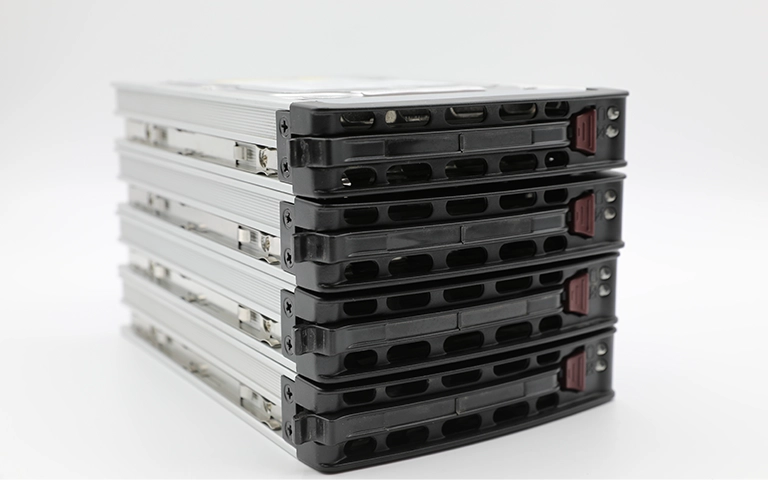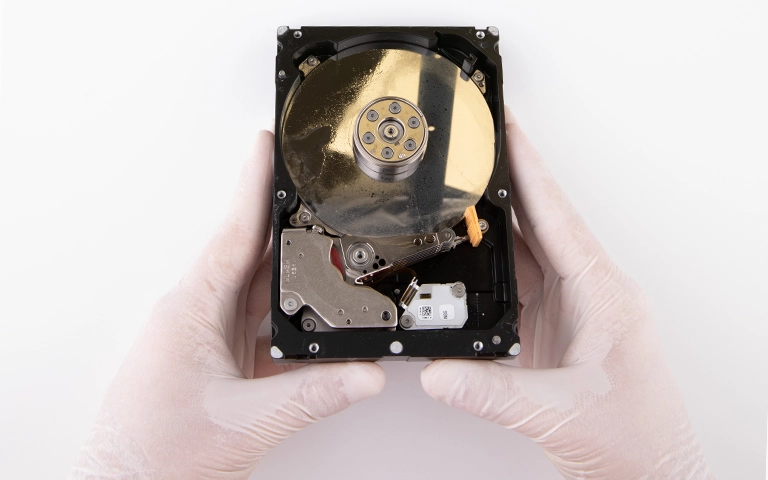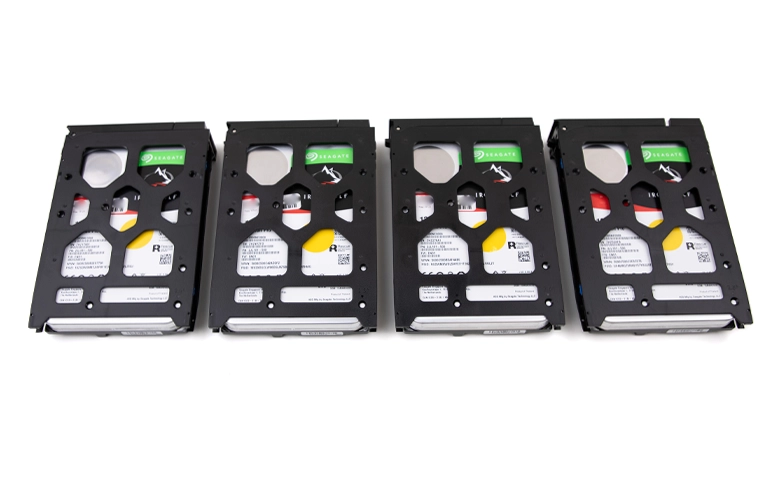Natural disasters often strike without warning, and when they do, the damage extends far beyond physical structures.
For one medium-sized business, a severe flood left their MySQL database server completely inaccessible. The system contained vital backup data that supported daily operations, financial records, and customer information.
Realizing the risk of permanent data loss, the company avoided any attempt to restart or repair the damaged server.
Instead, they immediately contacted RAID Recovery Services for professional evaluation. This quick decision proved crucial, as timely intervention often determines whether data can be successfully recovered after such an event.
When the system arrived at our lab, the priority was clear, restore the client’s essential database safely and efficiently while preserving every possible bit of information.

Background – MySQL Database Setup and RAID Configuration
The client’s server stored essential backups for their business applications and databases. It was configured with four hard disk drives operating in a RAID 5 setup, chosen for its balance of performance and data protection.
This structure allows one drive to fail without immediate data loss by distributing parity information across all disks.
However, RAID 5 cannot protect against multiple drives failing simultaneously or physical damage caused by external events.
In this case, the flood damaged more than one drive, making the array unreadable. Even though the MySQL data was still magnetically stored, the server could not rebuild the array or access the database files.
Even redundant setups like RAID 5 can face corruption when hardware or environmental damage occurs, leading to inaccessible databases.
Learn more about Database Corruption and its causes.
The Flood and Resulting Data Loss
During a major flood, the company’s data center was exposed to significant water damage. The MySQL server, which stored years of business records, was directly affected. Water entered the chassis through ventilation openings and reached the drives inside.
Once the environment dried, the system was powered off but showed no signs of activity. The client immediately recognized the risk of electrical short circuits and avoided turning it on again. This careful decision prevented further damage to the drives and kept the data in a recoverable state.
In many similar cases, powering on a wet or recently flooded device can destroy electronic components and make recovery impossible. Taking the correct step early gave our engineers the best chance to restore the RAID array and the MySQL database.

Initial Assessment and Diagnostics
After the server arrived, our engineers performed a structured evaluation:
Inspection: Two of the four drives showed water damage near the PCB area.
Testing: Diagnostics confirmed short circuits on the affected drives.
Platter Check: Magnetic platters remained intact, meaning the data was recoverable.
Verification: The remaining drives were analyzed to confirm RAID 5 parameters.
Plan: Engineers prepared for PCB replacement and secure RAID reconstruction.
RAID 5 Data Recovery Process
Once diagnostics were complete, our engineers proceeded with the recovery in several controlled stages:
The two drives that suffered electrical damage had their printed circuit boards replaced with compatible donor units. This allowed the drives to power on safely without further risk.
To preserve calibration and unique drive parameters, the adaptive firmware chips were transferred from the original PCBs to the donor boards. This ensured that each drive maintained its original alignment during recovery.
Every hard drive, including the repaired ones, was cloned sector by sector. This created secure working copies, allowing engineers to perform virtual reconstruction without using the original media.
The RAID 5 array was rebuilt virtually by identifying the correct block size, parity order, and drive sequence. This step restored the logical structure of the array and made the stored MySQL data accessible.
Once the virtual RAID was functional, the MySQL database files were extracted, repaired where necessary, and validated for consistency.
Engineers confirmed the recovered database could be opened without corruption, verifying tables, relationships, and stored procedures.
This process followed the same safe principles detailed in How to Repair Degraded RAID, ensuring precise and reliable recovery.

Recovery Results and Client Outcome
After the virtual reconstruction and extraction, all MySQL database files were successfully restored. The recovered data included complete tables, indexes, and configuration files essential for the client’s business operations.
Verification confirmed that the database structure remained intact, and no data corruption was present. Once validated, the files were transferred to a secure external storage device and delivered to the client for immediate use.
The company was able to resume operations without data loss or extended downtime. The entire recovery was completed within a few business days, thanks to the client’s quick response and our engineers’ experience with RAID 5 configurations.
Fast turnaround times for business-critical data
Lessons Learned and Prevention Tips
This case highlights how fast action and professional handling can make the difference between recovery and permanent loss. Based on our experience, here are several key takeaways:
Avoid powering on water-damaged systems. This can short-circuit components and destroy recoverable data.
Maintain offsite and cloud backups. Store at least one copy of your critical data outside your primary location.
Regularly monitor RAID health. Early detection of drive degradation helps prevent multi-drive failures.
Protect servers from environmental risks. Keep them elevated or in waterproof enclosures when possible.
Seek professional help immediately. Quick assessment by experts greatly increases recovery success.
Understanding the main Reasons for RAID Data Loss helps businesses build stronger prevention strategies and avoid similar disasters.

Conclusion – Rapid Response, Reliable Results
The MySQL database recovery was a complete success, proving how critical professional expertise is after a natural disaster. The client’s quick decision to avoid self-repair allowed our engineers to restore every piece of data safely and efficiently.
At RAID Recovery Services, we specialize in handling complex RAID and database failures caused by floods, fires, or hardware breakdowns. Our methodical approach ensures that even severely damaged systems have the best chance of full recovery.
We have also successfully restored enterprise databases in similar scenarios, such as our Oracle Database Recovery Case.
If your server or database has been affected by a natural disaster, contact RAID Recovery Services for a professional evaluation and secure recovery process tailored to your situation.
Trust the experts with proven results
Frequently Asked Questions
How can ransomware affect RAID storage systems?
Ransomware encrypts the entire RAID array and often connected backups, making data and databases inaccessible. Recovery requires isolation and forensic reconstruction, not ransom payment.
Can data be recovered from a flooded MySQL server?
Yes, if power is cut immediately and the system is not restarted. Recovery success depends on contamination level and requires professional clean-room intervention.
How long does MySQL database recovery take after physical damage?
Typically 2 to 5 business days after diagnostics. Severe damage or multiple drive failures will extend timelines.
Is RAID 5 still reliable for database storage?
RAID 5 is operationally outdated for modern databases due to high rebuild risk. RAID 6 or RAID 10 with verified backups is the practical standard.
Does RAID Recovery Services handle other database types besides MySQL?
Yes. Recovery is supported for Oracle, Microsoft SQL Server, PostgreSQL, and other enterprise database platforms.